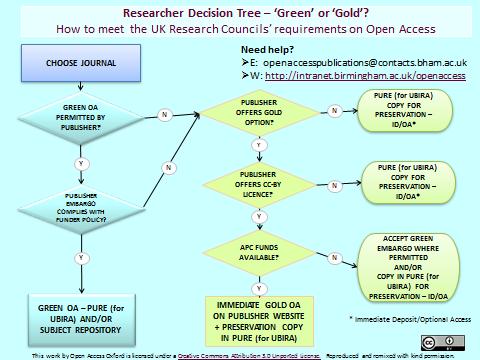Green or Gold: What's the difference?
Universities and Science Minister David Willetts recently said open access of research, “will connect people, including students and small businesses, to a wealth of global knowledge, maximising its impact and value."
On April 1st 2013, a new policy was introduced by Research Councils UK (RCUK) which expects researcher’s to make publicly funded research accessible to all. The benefits of open access for researchers can be three fold; increased accessibility, increased citations, and increased readership amongst businesses. Now, in an ideal world, all future research that was made possible through public money should be made visible to the public, but some items of consideration are needed.
Given the importance of Open Access to academic as well as the University, the Business School was privy to a very informative seminar given by Lisa Anderson, Dr Steve Bull and Suzanne Atkins. A focal point of the seminar surrounded the differing routes to achieving open access. When submitting your work to be published you will need to know whether the journal has either a Gold or Green route to ‘Open’ Access.
Gold Route to Open Access:
- Pay the publisher a fee (APC) to cover the costs of publication and release it immediately on the journal’s usual platform
- Publish in peer-reviewed journals funded by Article Processing Charges (APCs) rather than by subscriptions and access charges
- Article immediately available open access to all
- Licence for reuse – often CC-BY (Creative Common ‘Attribution’ license) others can modify, build upon and/or distribute the licensed work (e.g., for commercial purposes) so long as you the author are credited
Green Route to Open Access:
Academics make a version of their article available in an Open Access repository
- Self-archive the accepted version of the manuscript (‘post print’ or ‘author accepted’ manuscript) in an open repository (e.g. institutional or subject repository)
- You must keep a draft of your final accepted manuscript for PURE
- Journals’ own policies and contracts may force use of gold route due to embargoes
Other information given in the seminar outlined how to find the best journal for your Open Access needs.
Romeo
RoMEO is a searchable database of publisher's policies regarding the self- archiving of journal articles on the web and in Open Access repositories
- Use RoMEO to identify publisher copyright policies & self-archiving
- what you can do with different versions and what OA options there are)
Fact
A tool to help researchers check if the journals in which they wish to publish their results comply with their funder's requirements for open access to research
- Use FACT to check whether journal offers options that match your funder’s requirements
The seminar also provided a rather helpful decision tree (as shown below).

The world of research is changing so you must become familiar with your role in it. If you are completing research that is publicly funded (or not), a great point of call are the wonderful library staff already mentioned. If you wish further reading in the meantime, please click on the links below.
Further information is available here.